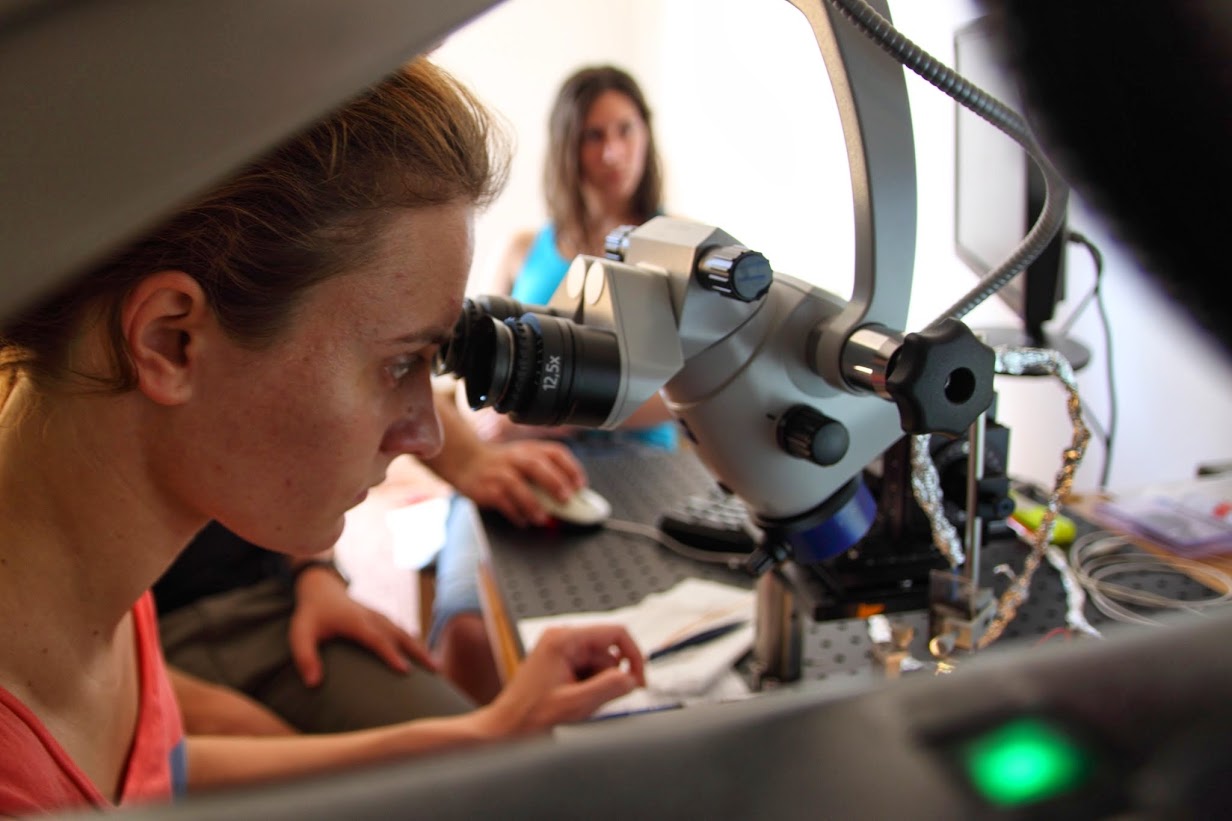The fourth edition of TENSS will take place between June 1-19, 2015. 150 students from 42 countries have applied for one of the 13 available places.

Confirmed lecturers
- Acsády, László – Institute of Experimental Medicine, Budapest, Hungary
- Albeanu, Florin – Cold Spring Harbor Laboratory, NY, USA
- Battaglia, Francesco – Radboud University, Nijmegen, Netherlands
- Bhalla, Upinder – National Centre for Biological Sciences, Bangalore, India
- Burrone, Juan – King’s College, London, UK
- Engert, Florian – Harvard University, Cambridge, MA, USA
- Gradinaru, Viviana – California Institute of Technology, Pasadena, CA, USA
- Häusser, Michael – University College, London, UK
- Hofer, Sonja – Biozentrum, University of Basel, Switzerland
- Hromádka, Tomáš – Institute of Experimental Medicine, Prague, Czech Republic
- Hübener, Mark – Max Planck Institute of Neurobiology, Martinsried, Germany
- Ji, Na – Howard Hughes Medical Institute Janelia Farm, VA, USA
- Kampff, Adam – Champalimaud Foundation, Institute for the Unknown, Lisbon, Portugal & University College London, UK
- Keller, Georg – Friedrich Miescher Institute, Basel, Switzerland
- Monyer, Hannah – University of Heidelberg, Germany
- Mrsic-Flögel, Tom – Biozentrum, University of Basel, Switzerland
- Mureşan, Raul – Coneural, Romanian Institute of Science and Technology, Cluj-Napoca, Romania
- Murthy, Venkatesh – Harvard University, Cambridge, MA, USA
- Nikolić, Danko – Max Planck Institute for Brain Research, Frankfurt, Germany
- Roska, Botond – Friedrich Miescher Institute, Basel, Switzerland
- Rumpel, Simon – Institute for Molecular Pathology, Vienna, Austria
- Singer, Wolf – Max Planck Institute for Brain Research, Frankfurt, Germany
- Whitlock, Jonathan – Kavli Institute for Systems Neuroscience, Trondheim, Norway
Organizers
- Mureşan, Raul – Coneural, Romanian Institute of Science and Technology, Cluj-Napoca, Romania
- Kampff, Adam – Champalimaud Foundation, Centre for the Unknown, Lisbon, Portugal & University College London, UK
- Albeanu, Florin – Cold Spring Harbor Laboratory, NY, USA
Teaching assistants
- Campbell, Rob – Biozentrum, University of Basel, Switzerland
- Dăbâcan, Adriana – Coneural, Romanian Institute of Science and Technology, Cluj-Napoca, Romania
- Dreosti, Elena – University College London, UK
- Gupta, Priyanka – National Centre for Biological Sciences, Bangalore, India & CSHL, NY, USA
- Hangya, Balázs – Institute of Experimental Medicine, Hungarian Academy of Sciences, Budapest, Hungary
- Moca, Vasile – Coneural, Romanian Institute of Science and Technology, Cluj-Napoca, Romania
- Modi, Mehrab N. – Cold Spring Harbor Laboratory, NY, USA
- Lopes, Gonçalo – Champalimaud Foundation, Centre for the Unknown, Lisbon, Portugal
- Sanders, Joshua – Danish Research Institute of Translational Neuroscience, Aarhus, Denmark
- Znamenskiy, Petr – Biozentrum, University of Basel, Switzerland
Topics
- Basic Optics – Diffraction and Resolution. Illumination Techniques. Numerical Aperture.
- Optical bench exercises – Lenses, optical systems, illumination methods, basic microscopy techniques. How to custom build different kinds of microscopes.
- Noise measurements and photo-sensors – Shot noise, optical detectors, amplifiers, NI-DAQ, CCD cameras, photodiodes, photo multiplier tubes (PMTs).
- Light and fluorescence microscopy – Fluorescence, FRAP, photo-activation, photo-conversion. Point spread function measurements, basic image analysis (deconvolution, denoising, PCA).
- Fluorescence probes – GFP, GFP based chromophores, organic calcium dyes, genetically encoded calcium dyes, pHluorins, voltage sensitive dyes.
- Intrinsic Optical Imaging – Visual, auditory & barrel cortex; olfactory bulb. Students will build a custom wide field fluorescence and intrinsic optical imaging rig.
- Scanning microscopy – Confocal and two-photon microscopy. LASERs. Introduction to Labview. Students will build a two-photon microscope and write custom scanning and acquisition software in Labiew. Open source systems.
- Viral approaches to label, monitor and alter neuronal circuits.
- Optogenetics – Light activated ion channels and pumps. Patterned photo-stimulation techniques.
- Benchtop electronics and basic electrophysiology – Impedence and Dipoles. Amplifiers. Extracellular and intracellular recordings. LFP; single unit, multi-unit extracellular recordings, tetrodes, electrode arrays; patch clamp.
- Awake head fixed and freely moving optical and electrophysiological recording strategies in rodents – Microdrives. Fiber optic based systems. Open source systems.
- Techniques for electrophysiological data analysis.
- Monitoring animal behavior – Open Source tools for acquisition and analysis of video data. Intro to Python and Arduino. Training Strategies. Closed loop systems.
- Neuronal functional connectivity and neuronal connectomics – Serial electron-microscopy and trans-synaptic labeling methods.
- Synchrony and oscillations.
- Cortical attention, sparse neuronal codes.
- Decision making, uncertainty, neuro-modulatory systems.